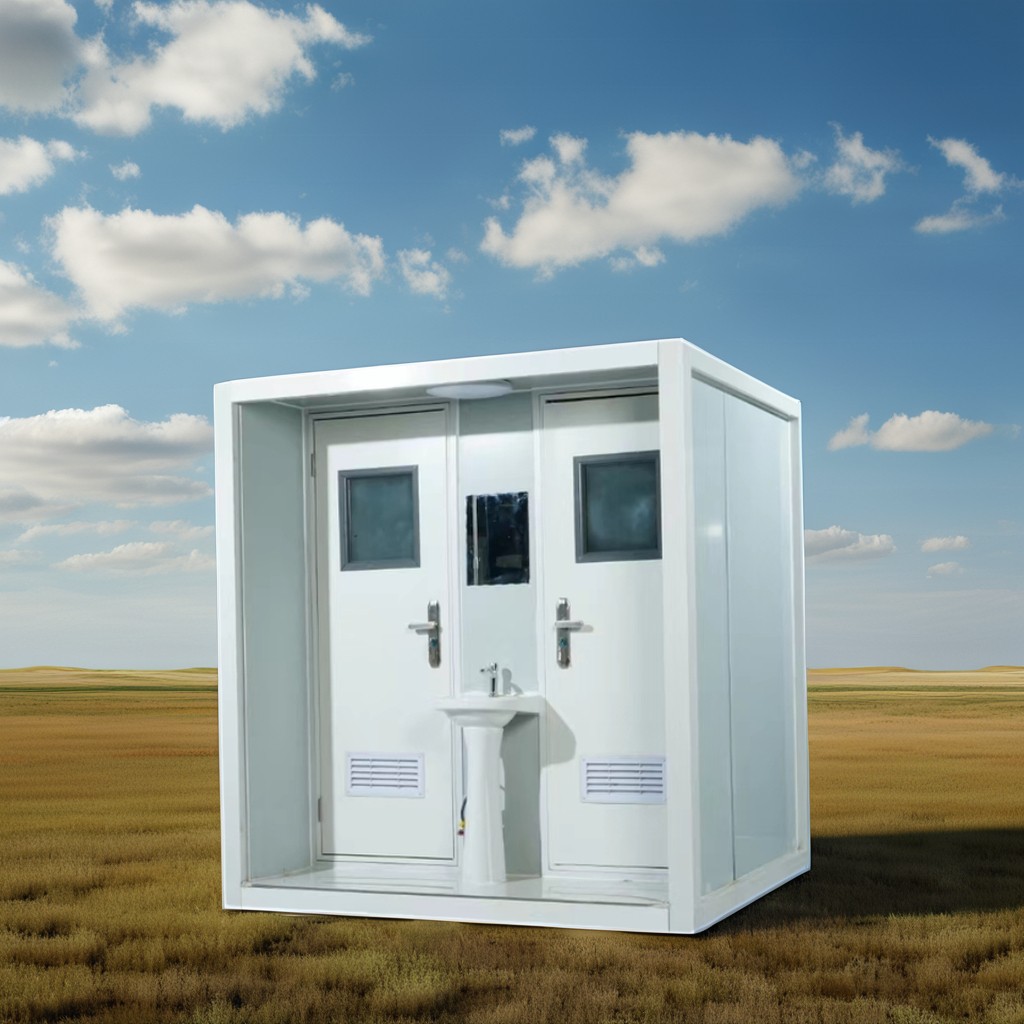What Makes Modern Portable Toilets Smarter, Cleaner, and More Sustainable?
2025-10-17
Portable toilets—often known as porta-potties or mobile sanitation units—are self-contained sanitary facilities that can be relocated and operated without fixed plumbing or sewer connections.In various contexts—such as outdoor events, construction sites, disaster relief zones, remote camps, and large public gatherings—portable toilets fill a critical gap in sanitation infrastructure.
Core Specifications, Types, and Key Features
Definition, Types, and Use Scenarios
-
A portable toilet is a movable unit that generally includes a waste-holding tank, ventilation, a toilet seat or bowl, and sometimes a flushing or handwashing subsystem.
-
Types include:
-
Chemical flush portable toilets (use of chemical solutions to manage odor and break down waste)
-
Water-flush / miniature plumbing units (with small freshwater tanks)
-
Waterless / composting toilets (dry systems, vermiculture, aerobic decomposition)
-
Modular / prefabricated multi-stall units with more permanent-style fittings and climate control
-
Typical Technical Parameters (Example Model Reference)
Below is a representative specification table for a mid-tier portable toilet model. (Exact values vary by brand and model.)
| Parameter | Typical Value |
|---|---|
| Unit Dimensions | ~ 1.2 m width × 1.2 m depth × 2.3 m height |
| Waste Tank Capacity | ~ 200–300 liters (50–80 gal) |
| Freshwater Tank (if applicable) | ~ 40–60 liters |
| Material | HDPE (High-Density Polyethylene) or molded polyethylene |
| Ventilation | Passive vent stack + roof vent; optional fan-assisted ventilation |
| Weight (empty) | ~ 80–120 kg |
| Features | Door lock, toilet seat, urinal, shelf, mirror, holding tank, optional sink/flushing |
| Optional Add-ons | LED lighting, solar power, sensor-level monitors, touchless fixtures, climate control |
These specs reflect common mid-range models. Premium or modular units may greatly exceed them in capacity, comfort, or technology.
Market Drivers, Benefits, and Challenges
Why Portable Toilets Matter: Benefits & Market Drivers
-
Hygiene & Public Health
Providing toilets where infrastructure is lacking prevents open defecation and disease transmission. Portable toilets serve as essential hygiene infrastructure at large gatherings, remote worksites, and disaster zones. -
Flexibility & Scalability
Units can be deployed, relocated, and scaled according to demand—ideal for festivals, construction phases, or emergency response. -
Increasing Demand & Market Growth
The global portable toilet market is growing rapidly, projected from ~$18 billion in 2024 to ~$30–31 billion by 2032.Urbanization, infrastructure projects, expanded outdoor events, and heightened public health awareness after COVID-19 are key growth forces. -
Sustainability & Eco Concerns
Rising environmental expectations push demand for biodegradable chemicals, water-conserving systems, solar power, composting toilets, and more durable, recyclable materials. -
Technology & Smart Monitoring
Sensors and IoT systems enable real-time monitoring of waste levels, usage patterns, and service scheduling, improving operational efficiency and reducing downtime.
Challenges & Constraints
-
Odor Control & Ventilation
Even with ventilation and chemicals, controlling odor remains a core technical challenge—especially in hot climates or high-usage events. -
Servicing & Logistics
Frequent pumping, cleaning, and maintenance must be managed efficiently, especially in remote or large-scale deployments. -
Regulation & Permitting
Local regulations about placement, waste disposal, water usage, and environmental impact differ widely and must be adhered to. -
User Perception
Portable toilets often suffer from negative perceptions of unpleasantness or uncleanliness—modern design and branding are essential to overcome that. -
Cost of Advanced Features
Integrating sensors, climate control, or solar systems can raise costs—balancing ROI is critical.
Thus, the “why” dimension makes clear that portable toilets are not just convenience items: they are strategic infrastructure with rising expectations, constrained by engineering, cost, and operational dynamics.
Design, Deployment, Maintenance, and Trends
How Advanced Portable Toilets Are Engineered & Deployed
Design & Feature Integration
-
Ventilation & Airflow: Roof vents, passive ventilation channels, or powered fans are integrated to draw odors upward and reduce stagnation.
-
Sealing & Odor Barriers: Gaskets, traps, or chemical seals block odor from escaping the waste tank.
-
Sensor Integration: Ultrasonic or pressure sensors monitor fill levels; usage counters track traffic.
-
Energy & Power: Many units use solar panels or battery systems to power fans, lighting, sensors, or even small pumps.
-
Touchless & Hygiene Add-Ons: Infrared faucets, automatic soap dispensers, foot-flush systems, or UV sterilization surfaces reduce contact.
-
Modular Construction: Multi-stall trailers or prefabricated units are built from insulated panels and steel frames to provide durability, climate control, and scalability.
Deployment & Logistics
-
Site Planning & Ground Prep: Ensure level ground, stable base (plywood or concrete pads), and access for servicing vehicles.
-
Spacing & Flow Management: Deploy units near expected population flow; plan for queues and access.
-
Servicing Routes: Use sensor data or scheduled routing to optimize cleaning and pump-out visits.
-
Waste Disposal: Transport waste to approved treatment or disposal facilities, respecting local environmental regulations.
-
Seasonal Adjustments: In colder climates, winterize units (insulation, anti-freeze, heated systems) to prevent freezing.
Maintenance & Lifecycle Management
-
Routine Cleaning: Sanitizing surfaces, restocking supplies (toilet paper, hand sanitizer), and scrubbing odors.
-
Inspection & Repair: Check seals, hoses, sensors, ventilation, and structural integrity regularly.
-
Replacement & Upgrades: Over time, older units may be replaced or retrofitted with new tech (e.g. sensors, LED lighting).
-
Supply Chains & Spare Parts: Maintain inventory of parts (valves, gaskets, fans, sensors) to minimize downtime.
Emerging Trends & Future Directions
-
Smart & IoT-Driven Systems
Expect broader adoption of sensor networks for usage analytics, real-time alerts, and predictive maintenance. -
Vacuum-Assist / Low-Water Transfer
Waste removal with minimal water using air pressure or vacuum transfer, reducing tank capacity and pumping frequency. -
Waterless / Composting Systems
Composting toilets continue to gain traction in low-infrastructure settings thanks to zero-water operation. -
Renewable Power Integration
More units will rely on solar or rechargeable battery systems to power ventilation, lighting, and sensors. -
Modular & Flexible Layouts
Units that can be combined, expanded, or reconfigured on demand allow better adaptation to varying event sizes. -
Sustainability Certifications & Green Branding
Eco-labels and verified lifecycle environmental impact will become differentiators in procurement decisions.
Frequently Asked Questions (Common Concerns)
Q1: How often should a portable toilet be serviced or pumped?
A1: Service frequency depends on usage intensity, waste tank size, and user numbers. For moderate use (e.g. an outdoor event), pumping every 1–3 days is typical. For high-traffic scenarios, daily or twice-daily service may be necessary. Monitoring sensors help optimize scheduling and avoid overflow.
Q2: How is odor controlled in a portable toilet?
A2: Odor control uses multiple strategies: chemical agents in the waste tank to neutralize odor, sealed traps or gaskets to prevent gases from escaping, active ventilation (fan or passive vents) to exhaust stale air, and coatings or materials that resist organic buildup. In advanced units, activated carbon filters or UV air sterilizers may be added.
Conclusion & Outlook (Including Cymdin & Contact Us)
In summary, portable toilets have evolved far beyond basic utility cabins—they are now engineered systems balancing sanitation, user comfort, operational efficiency, and environmental responsibility. From core specs and deployment strategies to the market forces driving innovation, portable toilets are a quietly transformative infrastructure in modern outdoor experiences.
Going forward, expect to see deeper integration of smart technologies, waterless systems, modular designs, and renewable power. These trends will push portable toilets into higher-margin, premium tiers that satisfy rigorous user expectations.
Among forward-looking brands, Cymdin is dedicated to delivering portable sanitation solutions combining durability, smart sensing capabilities, sustainable materials, and user-centric design. To learn more about how Cymdin’s portable toilets can enhance event planning, construction sites, or sanitation projects, contact us to discuss your custom needs and get a quote.



